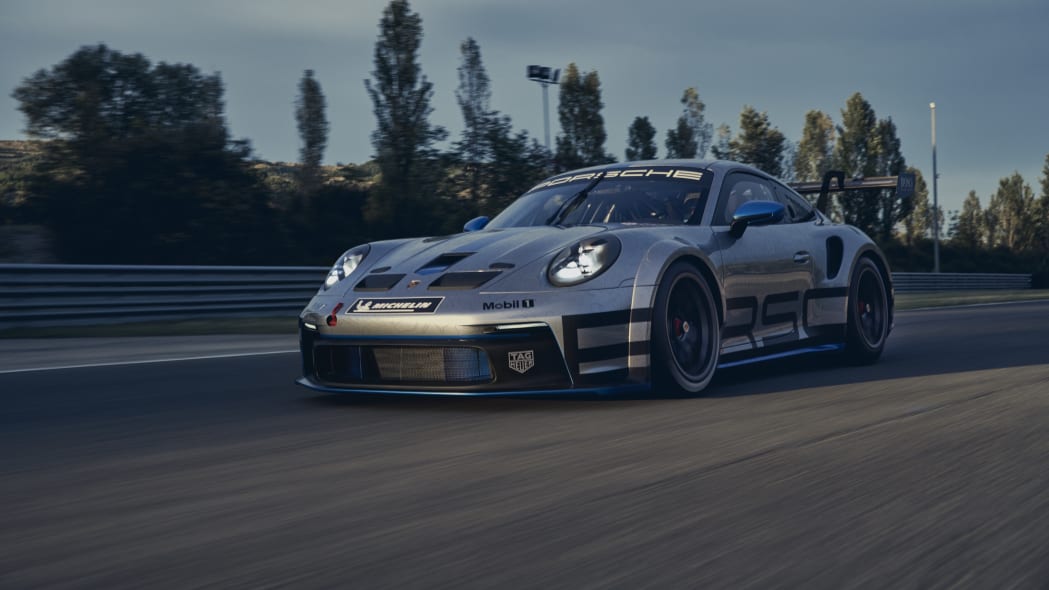Porsche funneled decades of racing experience into the 2021 911 GT3 Cup, the first evolution of the 992-generation 911 developed exclusively for the track. It picks up where its successful predecessor left off with a more powerful flat-six engine, aerodynamic upgrades, and a wide body shared with the 911 Turbo.
Jan Feldmann, the GT3 Cup's project manager, explained his team's goal was to make the model quicker, easier to handle, and more durable in tough racing conditions while giving it a more muscular design. Visually, it's characterized by flared fenders that hide a wider front track, vented rear fenders that cover a wider rear track, and an 11-stage adjustable rear wing. And yet, its dry weight checks in at 2,777 pounds thanks in part to polycarbonate windows and the use of carbon fiber-reinforced plastic and aluminum in its construction.

Sitting on a height-adjustable seat, the driver faces a digital instrument cluster embedded into a carbon fiber dashboard and an open-top steering wheel borrowed from the 911 GT3 R. Porsche added a cluster of buttons on the center stack that are designed to be easy to operate, even when driving flat-out down the main straight.
Power for the 911 GT3 Cup comes from a naturally-aspirated 4.0-liter flat-six which produces 510 horsepower at 8,400 rpm, a 25-horse increase over the outgoing model, and 347 pound-feet of torque at 6,150 rpm. It's capable of burning synthetic fuel, a technology Porsche is investing a substantial amount of money into, and it allows the GT3 Cup to post lap times that are about one percent quicker. Racers have three exhaust systems to choose from, depending on where they plan to compete, and Bosch's MS 6.6 technology manages the engine. The flat-six is bolted to a six-speed sequential transmission connected to a pair of steering wheel-mounted shift paddles.
These specifications are impressive, but teams racing globally are also concerned with a completely different set of parameters: maintenance intervals. Porsche pointed out it didn't neglect this aspect of racing. Mechanics need to perform a maintenance check after 100 hours of track time, and the gearbox can race for 120 hours before needing a major overhaul. New calipers also make changing the brake pads a much quicker job
